This classic Udon Noodle Soup (Kake Udon) is all about simplicity and comfort. The thick and chewy noodles are nestled in a delicate broth that’s vegan adaptable. Enjoy this basic udon soup as is or add your favorite toppings for a more substantial meal.
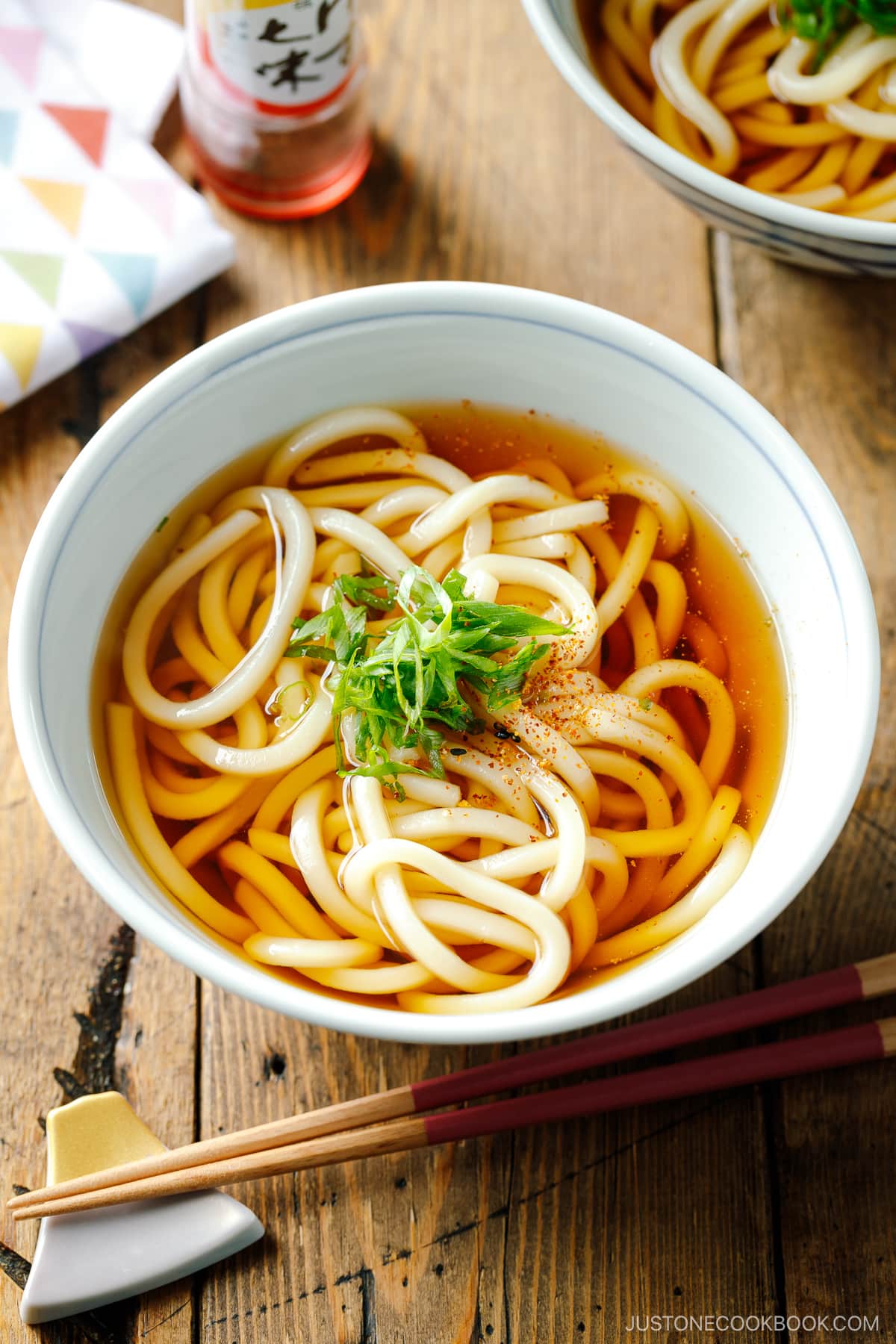
Of all the Japanese noodles, udon is my go-to comfort food. These thick, chewy wheat noodles have a unique way of satisfying hunger and soothing the soul. While there are many variations, nothing beats the simplicity of classic Kake Udon (かけうどん). Today, I’ll show you how to make an authentic bowl with my homemade soup broth for rich, umami taste or a quick version with store-bought soup base.
If you’re craving more Japanese udon recipes, try my Kitsune Udon, Beef Udon, and Yaki Udon (Stir-fried Udon Noodles) recipes next!
Table of Contents
What is Kake Udon?
Kanto-style kake udon (かけうどん) is the most basic form of hot udon noodle soup with a most simple garnish of sliced green onions. The Kansai region (Osaka, Kobe, and Kyoto areas) calls this dish su udon (素うどん) and uses a lighter-colored dashi broth. Udon is a specialty of several areas in Japan including Kagawa (the “Capital of Udon”) in the Shikoku region that’s known for the popular Sanuki udon (讃岐うどん). Fukuoka in the Kyushu region and Saitama in Kanto are also famous for their delicious variations.
Why I Love This Recipe
- Learn to make my homemade udon broth – I’ll teach you how to make soup broth from scratch that tastes just as good or better than any restaurant.
- Chewy and bouncy noodles – I’ll share the udon noodles that I always use for the best and most satisfying texture.
- Optional quick soup broth – If you’re short on time, try my quick broth option to make this Kake Udon in just 15 minutes!
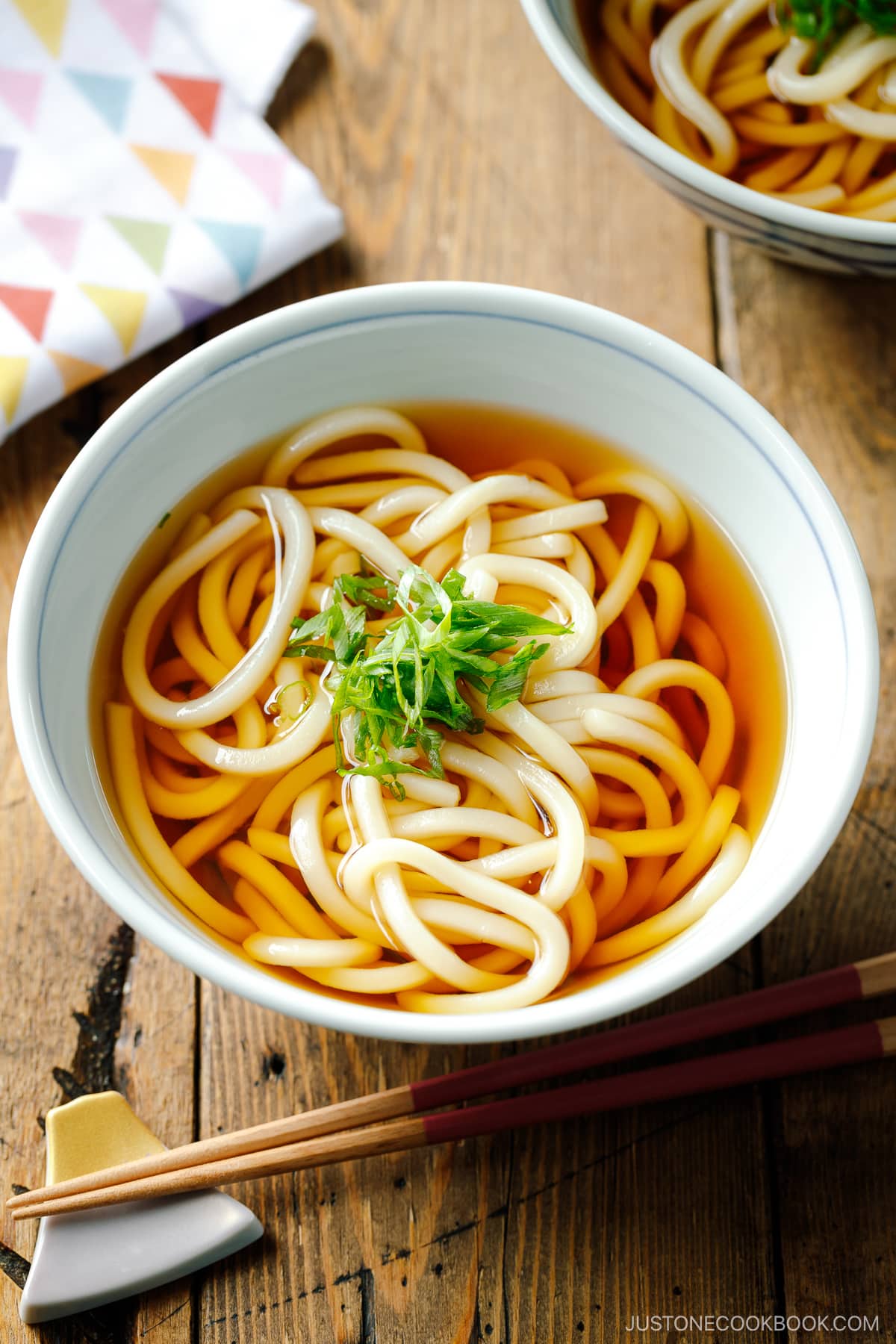
Ingredients for Udon Noodle Soup
- Udon noodles – frozen (recommended)
- Homemade soup broth (or make the quick broth below):
- Dashi (Japanese soup stock) – For the best flavor, make Awase Dashi and Vegan Dashi from scratch before starting this recipe. Short on time? Use a Dashi Packet for a quick 5-minute stock!
- Mirin
- Sugar
- Soy sauce
- Kosher salt
- Green onions and optional shichimi togarashi (Japanese seven spice) – for garnish
Find the printable recipe with measurements below.
Jump to RecipeSubstitutions
- Udon noodles: For gluten-free, you can use rice udon noodles as well as gluten-free soy sauce or tamari soy sauce.
Short on Time?
Try my quick broth in the recipe below instead of making dashi from scratch using katsuobushi (bonito flakes). Simply use bottled mentsuyu (concentrated noodle soup base) from a Japanese grocery store or Amazon. Just follow the bottle‘s instructions for hot udon soup (うどん or めんのかけつゆ).
For an even better option, make my Homemade Mentsuyu ahead of time!
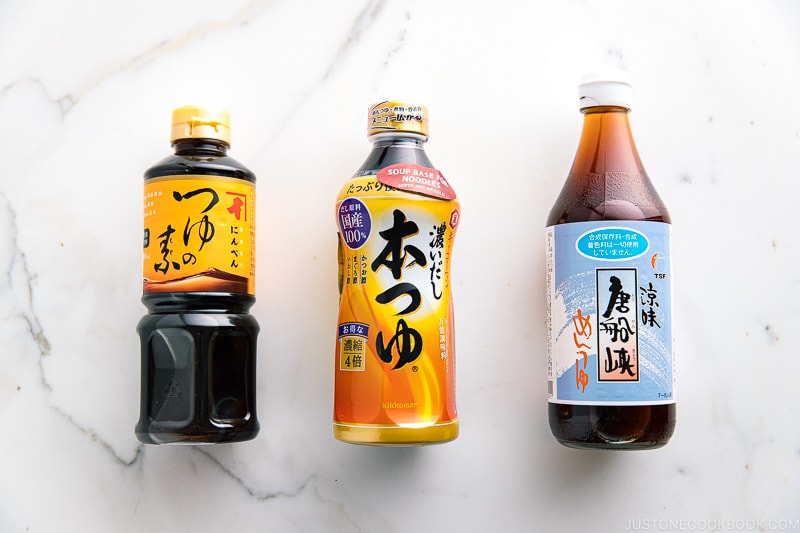
How to Make Udon Noodle Soup
Preparation
Step 1 – Make the homemade soup broth. In a medium saucepan, bring the broth ingredients to a gentle simmer, then cover it with a lid and set it aside. (Or, make my shortcut quick broth.)
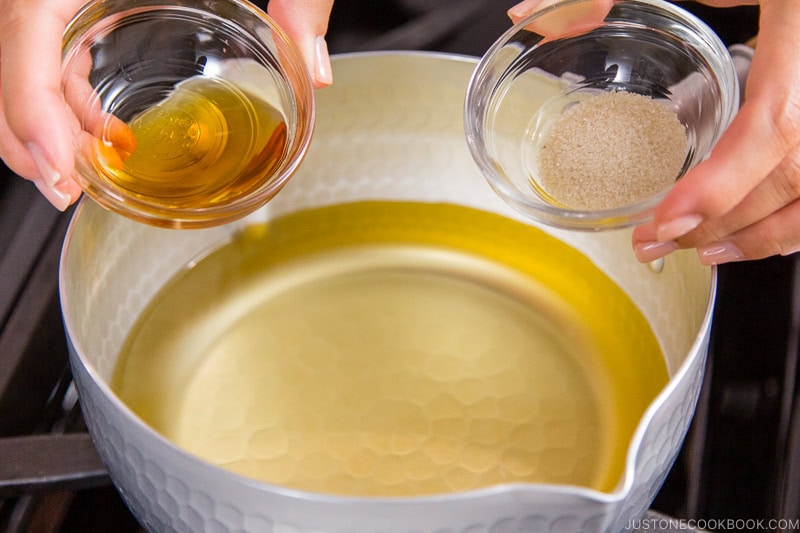
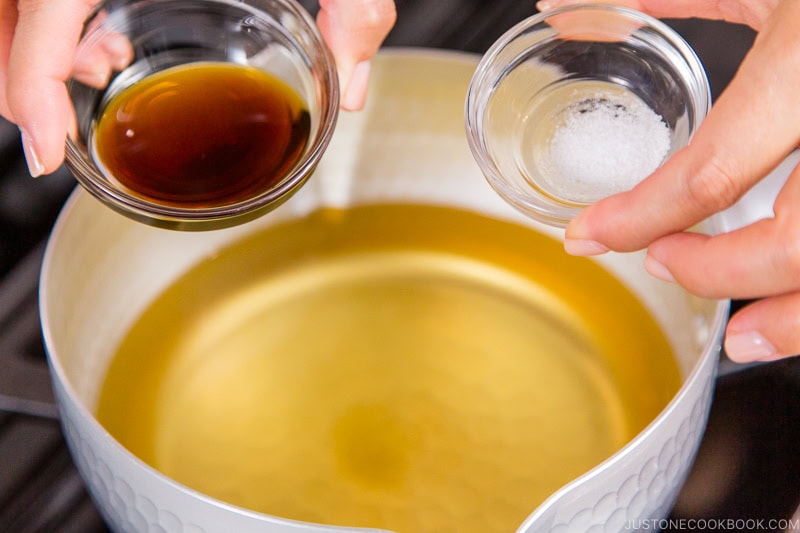
Cooking
Step 2 – Reheat or cook the udon noodles. Bring a large pot of water to a boil, then add the noodles to reheat or cook per the package instructions. Stir to loosen up the noodles. Drain in a colander. Divide into bowls.
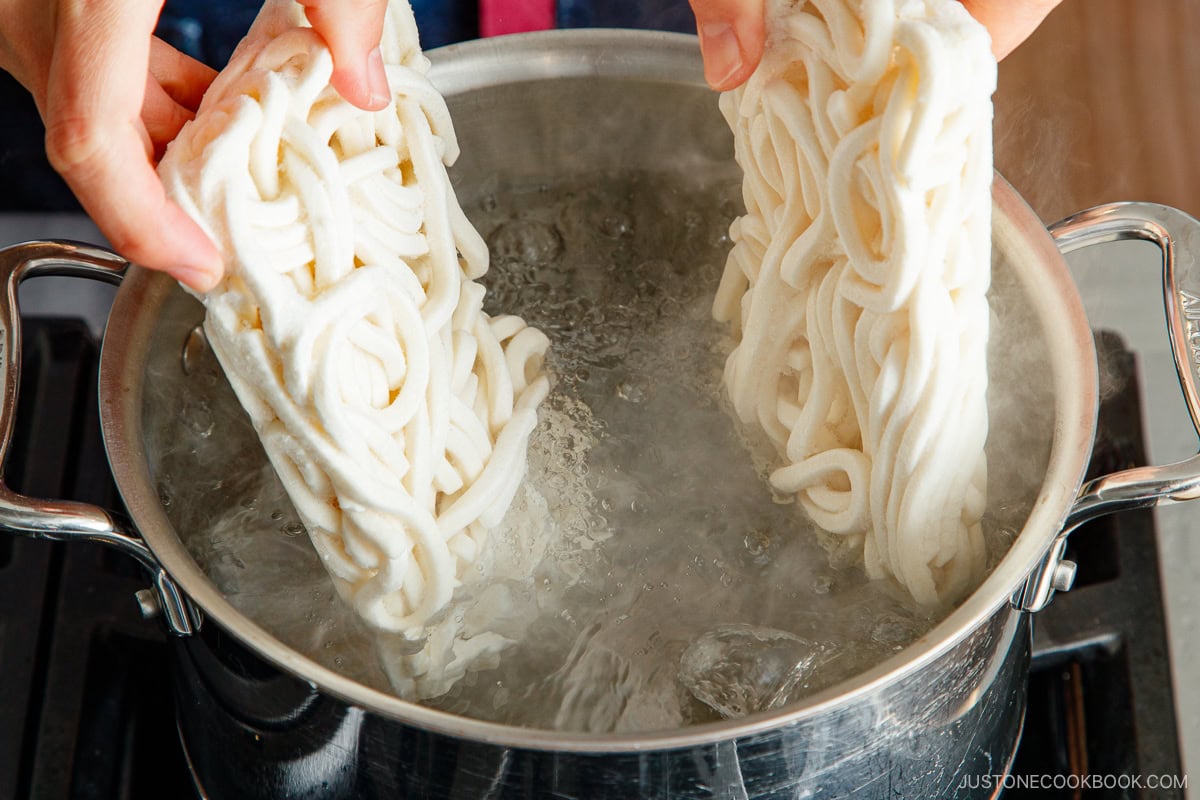
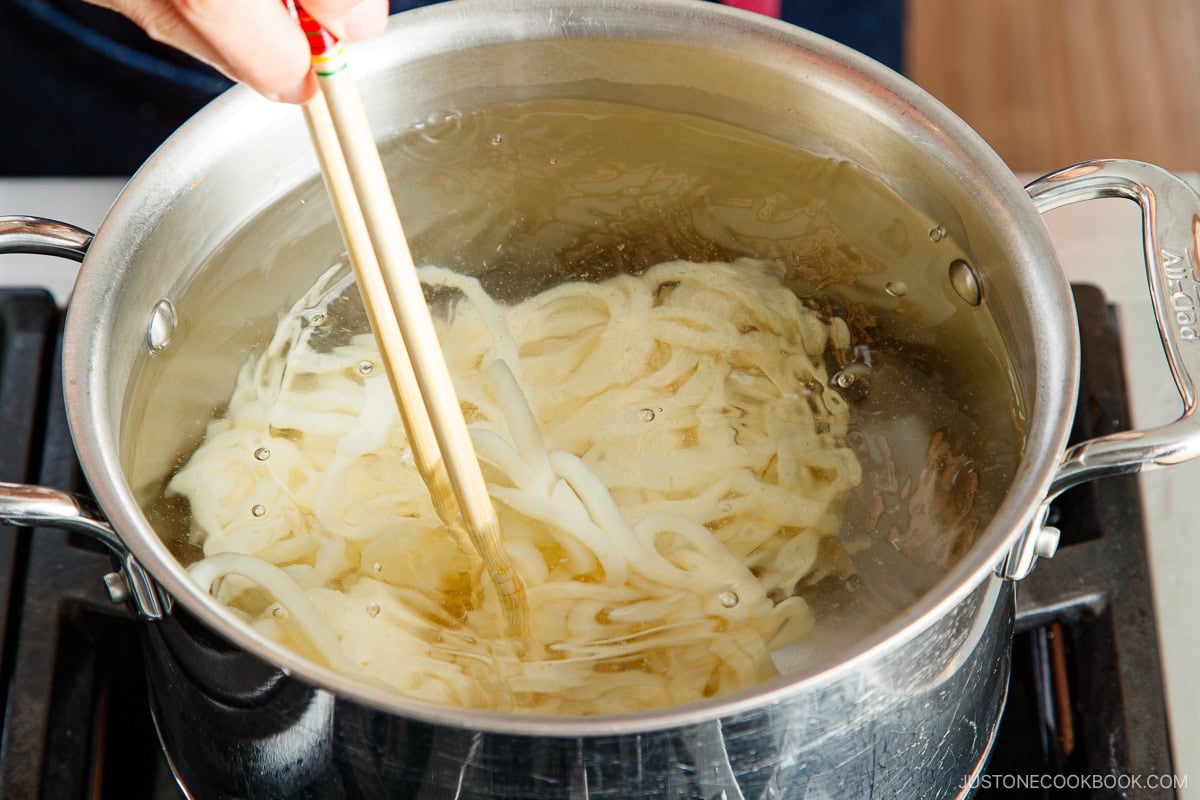
Assemble
Step 3 – Pour the hot broth over the noodles. Garnish with thinly sliced green onion and optional shichimi togarashi for a spicy kick.
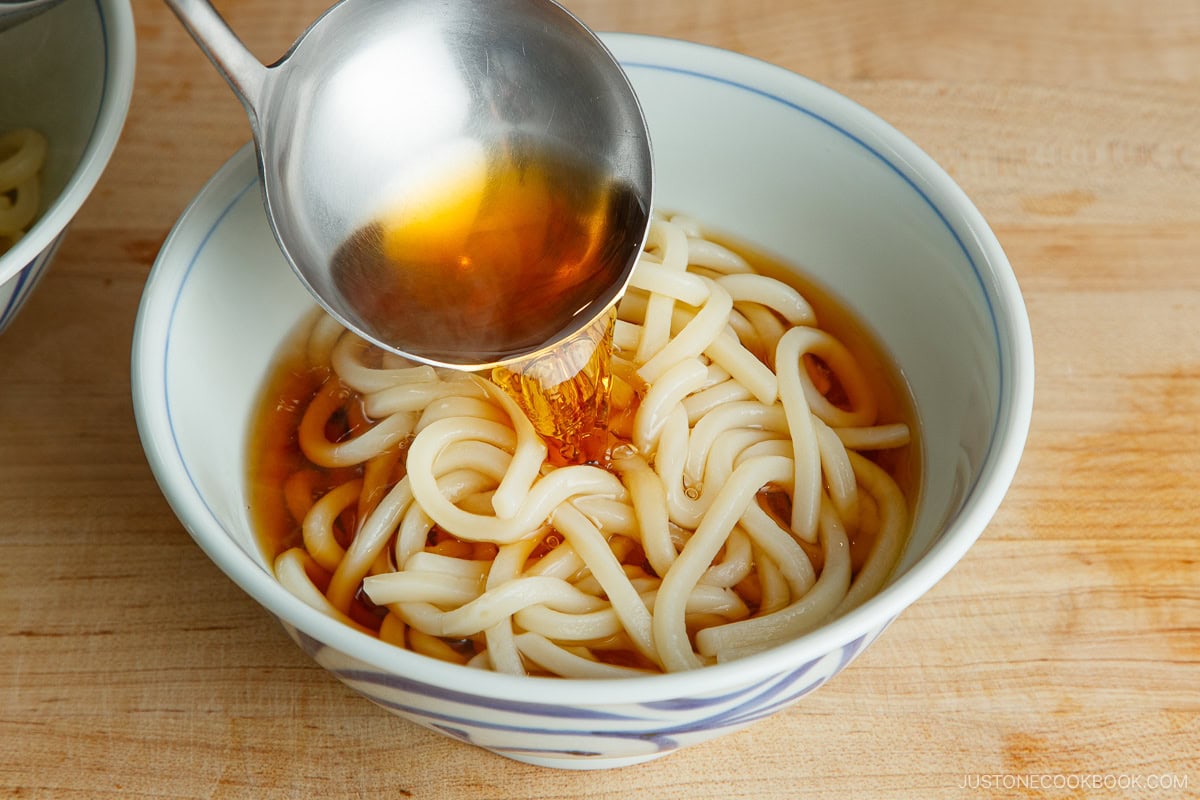
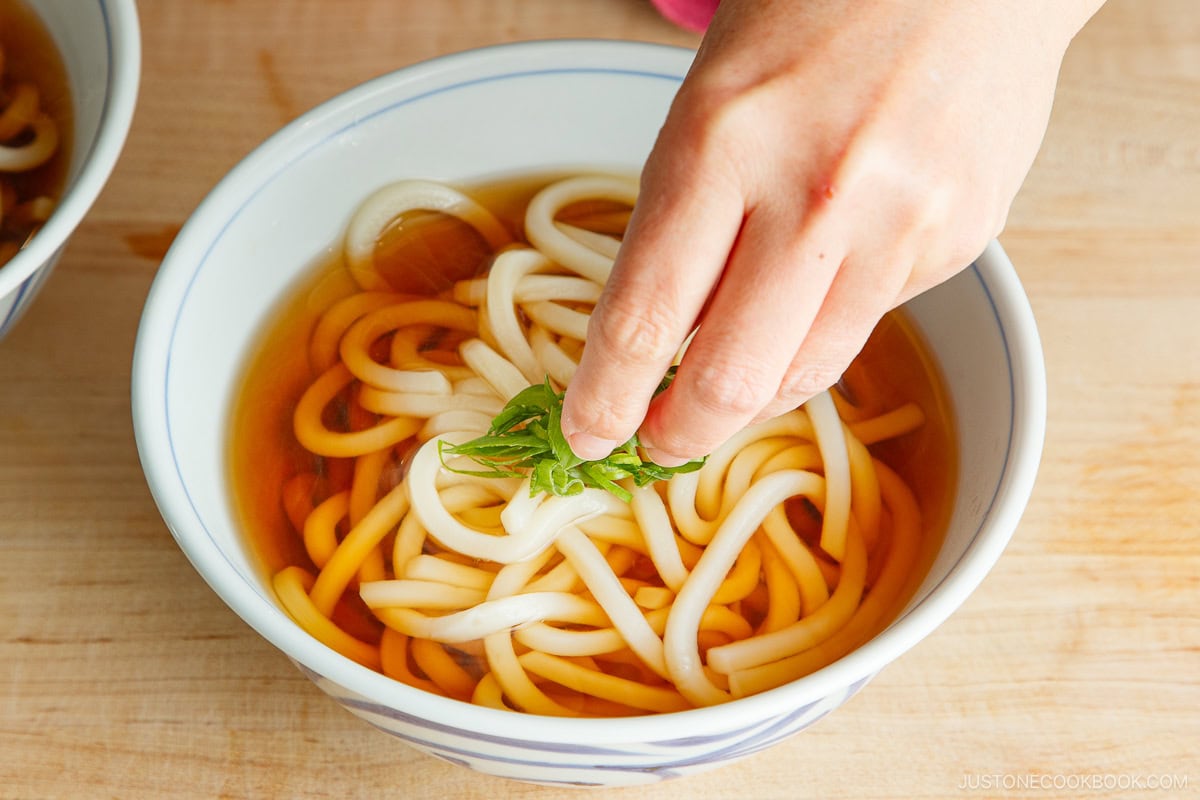
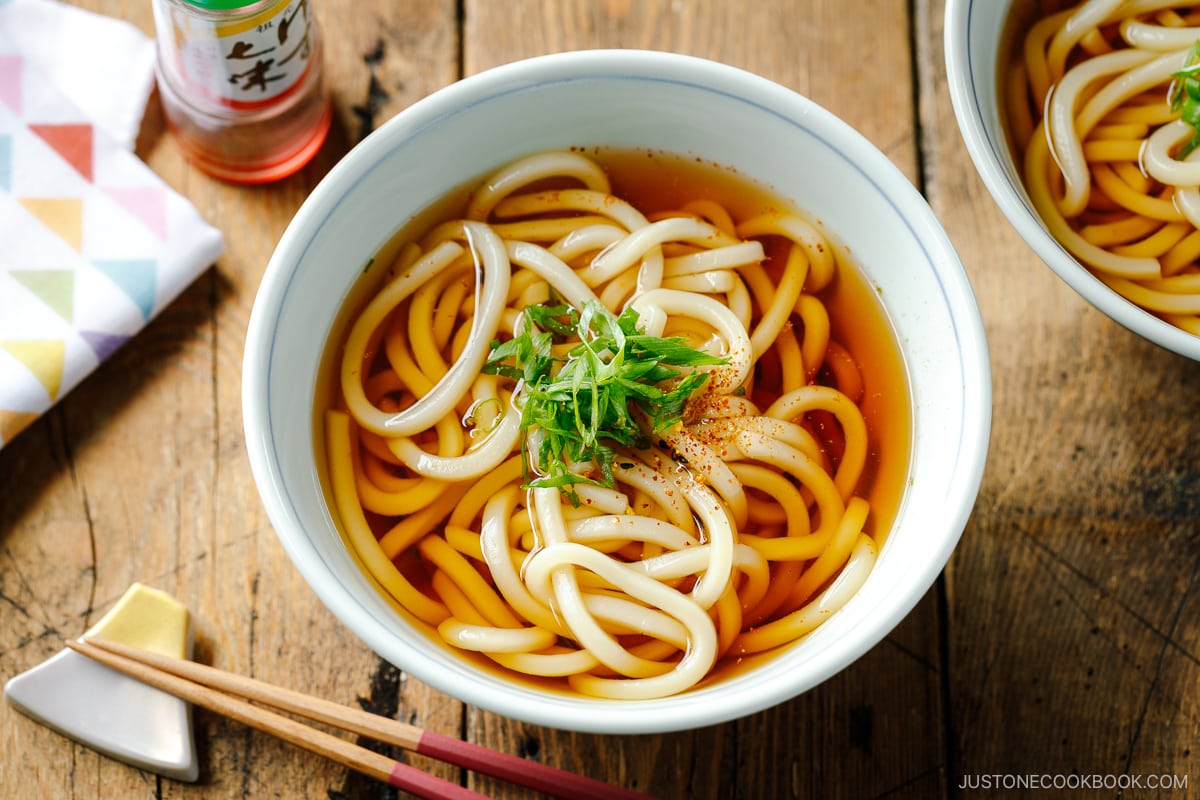
Nami’s Recipe Tips
- Use a good, flavorful dashi – Quality Japanese soup stock is the key! Homemade dashi offers the best flavor and takes under 30 minutes to make. If you’re short on time, a dashi packet is a 5-minute shortcut with good flavor. Dashi powder works in a pinch, but it lacks depth and is my least favorite option.
- Use frozen udon noodles – It takes just 1 minute to reheat them in boiling water. My favorite is frozen Sanuki udon for its thick and chewy texture.
- Boil the noodles separately from the soup broth – Avoid cooking or reheating the noodles directly in the soup broth as they release excess starch that can make the broth cloudy.
- Make homemade noodles for the best texture – If you have time, try making Homemade Udon Noodles with wheat flour, water, and salt!
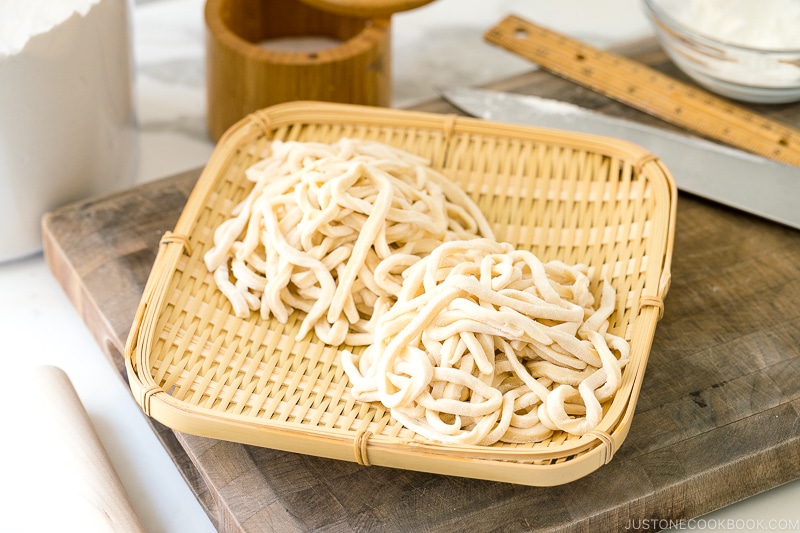
Customizations
There are many ways to customize this simplest of udon soups. I encourage you to experiment with different proteins and toppings for added flavor, nourishment, and variety.
- Add protein. I like to use Shrimp Tempura to make a simple tempura udon. You also can add fish cake like kamaboko and chikuwa or deep-fried fish cake called Satsuma age. Tofu works well, too; try deep-fried tofu pouch (Inari age) or deep-fried tofu cutlet (atsuage).
Many are pre-prepared and readily available at well-stocked Japanese markets. My video shows four variations!
- Top with vegetables. Try leafy greens like blanched komatsuna or spinach. Grated mountain yam called nagaimo/yamaimo adds a unique slimy texture.
- Sprinkle with yuzu zest. This aromatic citrus peel adds a refreshing touch. Check out my post on How to Store Yuzu Zest from your winter harvest!
- Add nutrient-rich toppings. My favorites are wakame seaweed, natto (fermented soybeans), and dried kelp shavings called tororo kombu.
- Add a spicy kick. While shichimi togarashi is a classic choice, other condiments that we love to use are yuzu kosho, sansho pepper, and Crunchy Garlic Chili Oil (taberu rayu).
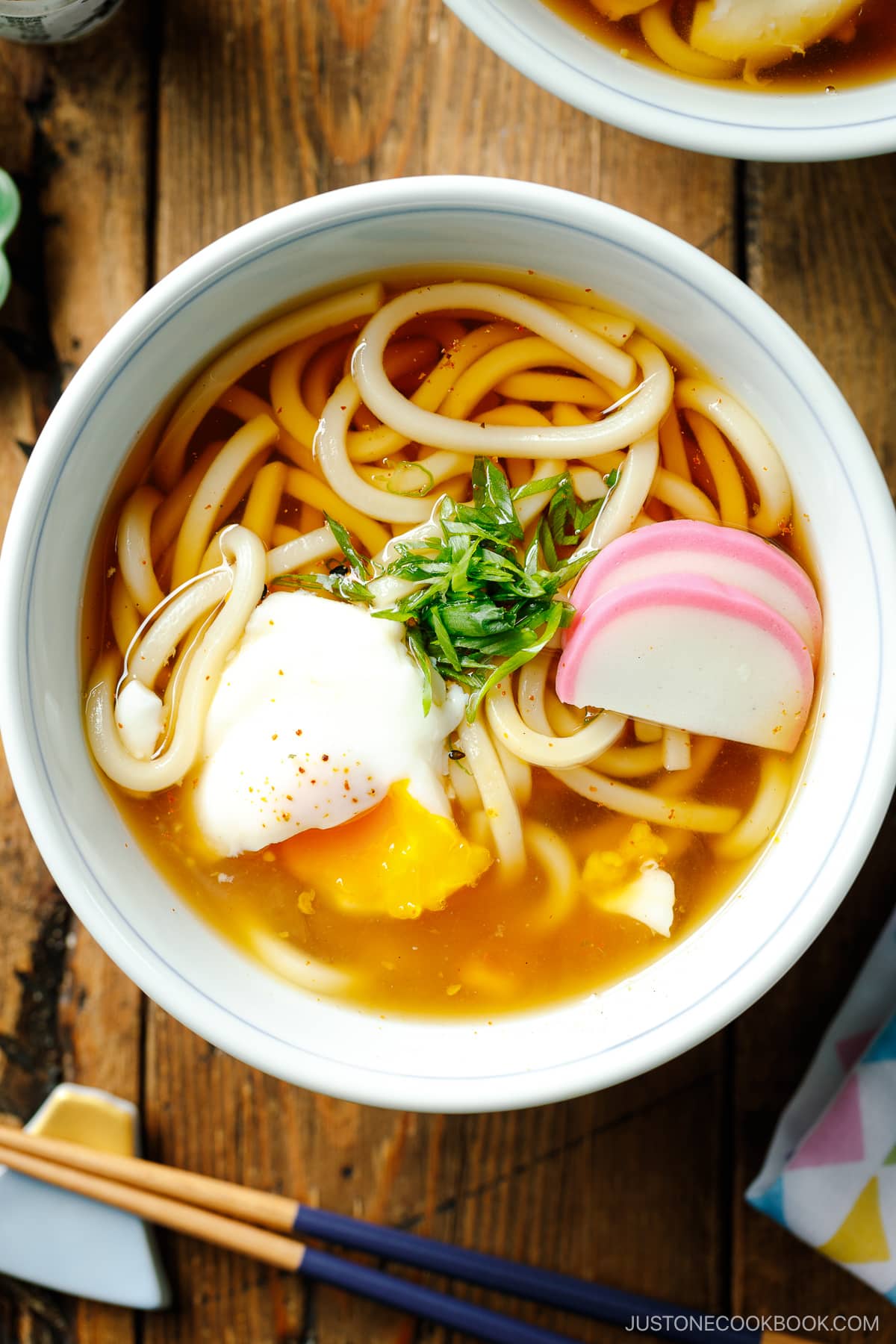
Udon Variations
Add signature toppings to make popular udon dishes! In Japan, we have different names for udon soup depending on the toppings we use.
- Kitsune Udon – Add seasoned fried tofu pouches and pink-swirled fish cake (narutomaki).
- Nabeyaki Udon – Crack a whole egg and cook in the noodle soup.
- Tsukimi udon – Add a raw egg yolk on the top of the noodle soup.
- Tanuki udon – Sprinkle tempura scraps (tenkasu or agedama) over the hot udon noodle soup.
- Chikara Udon – Add a toasted mochi on top of the udon noodle soup.
- Niku Udon – Add seasoned beef on top of the udon.
- Curry Udon – The soup is mixed with curry roux.
The possibilities are endless!
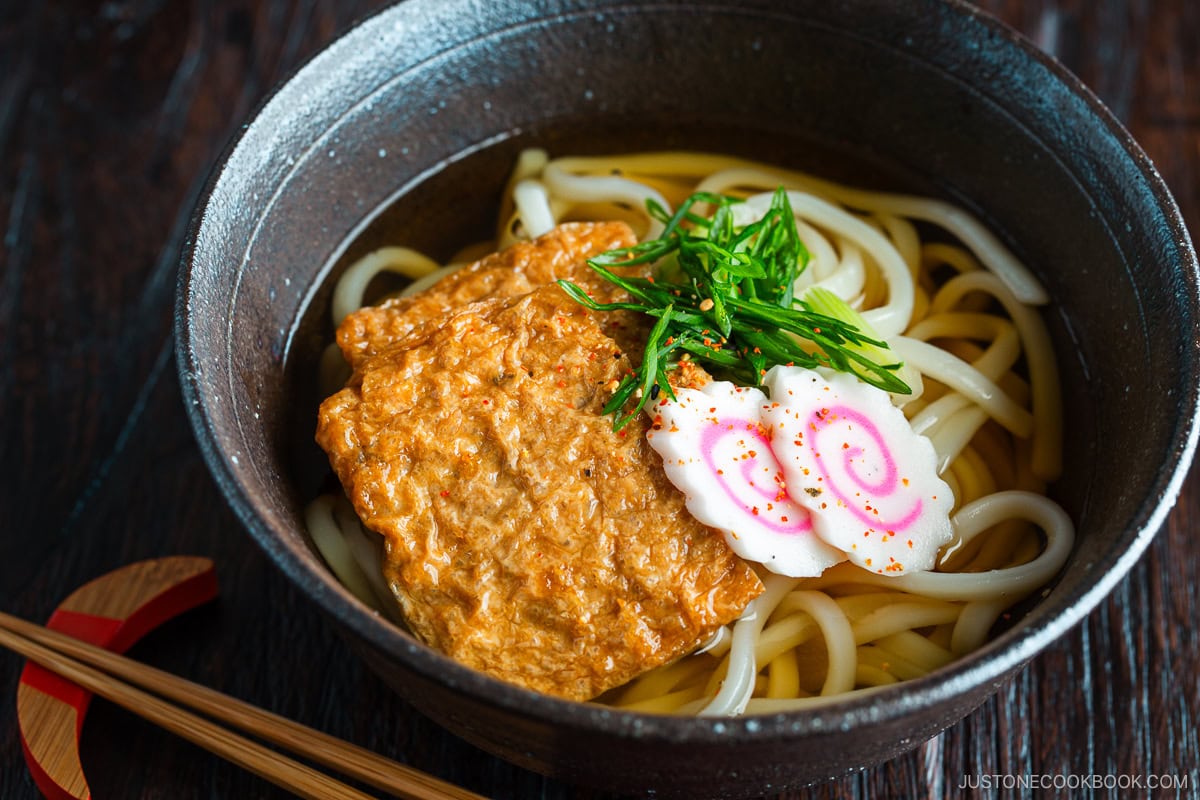
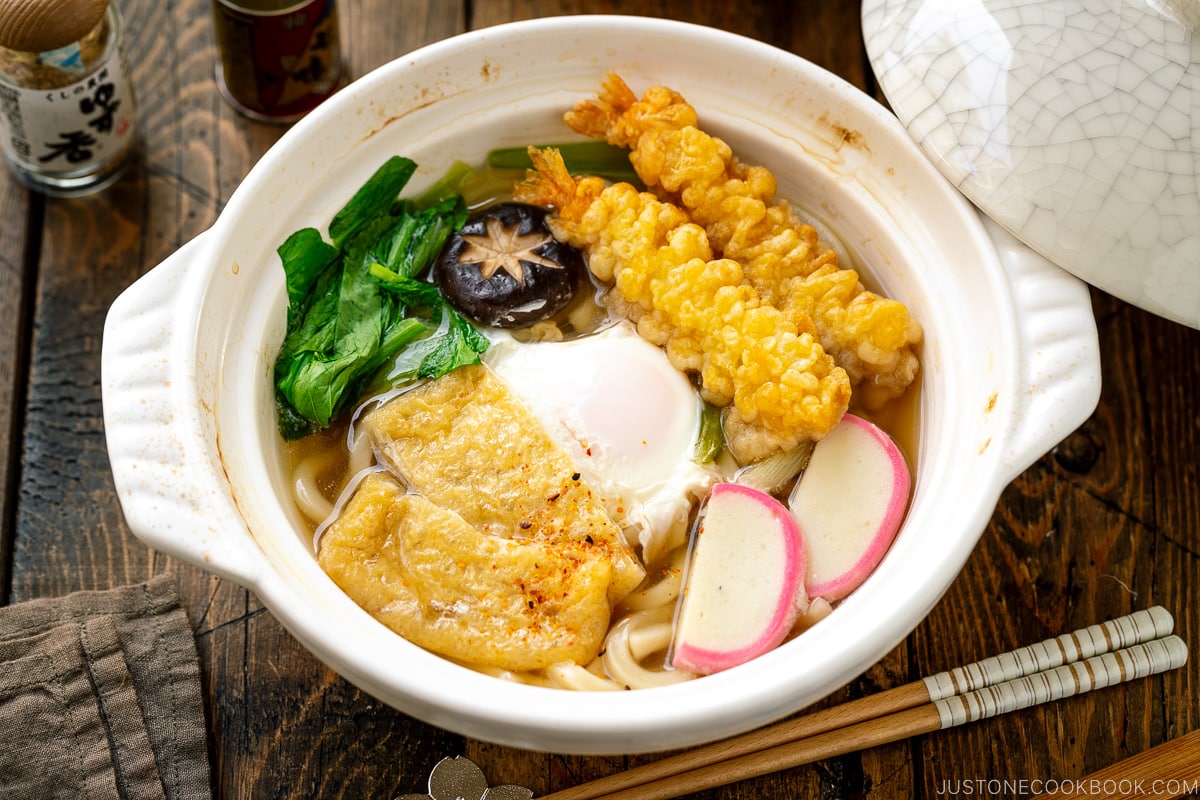
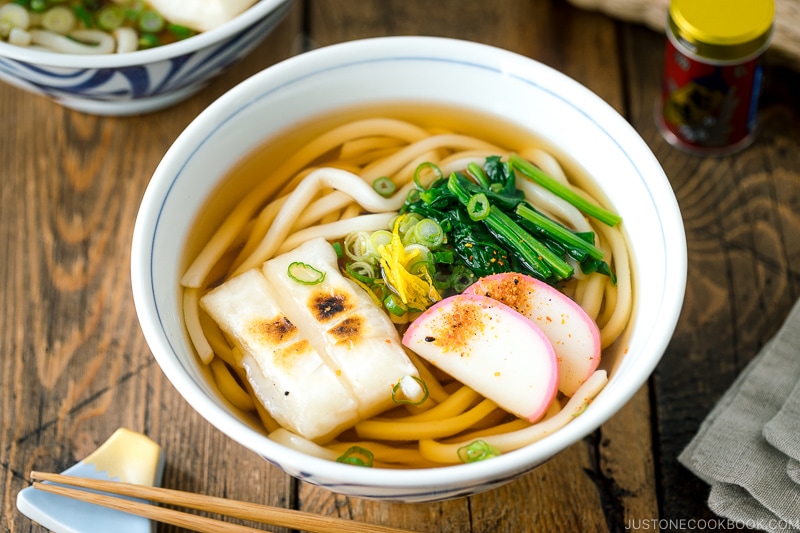
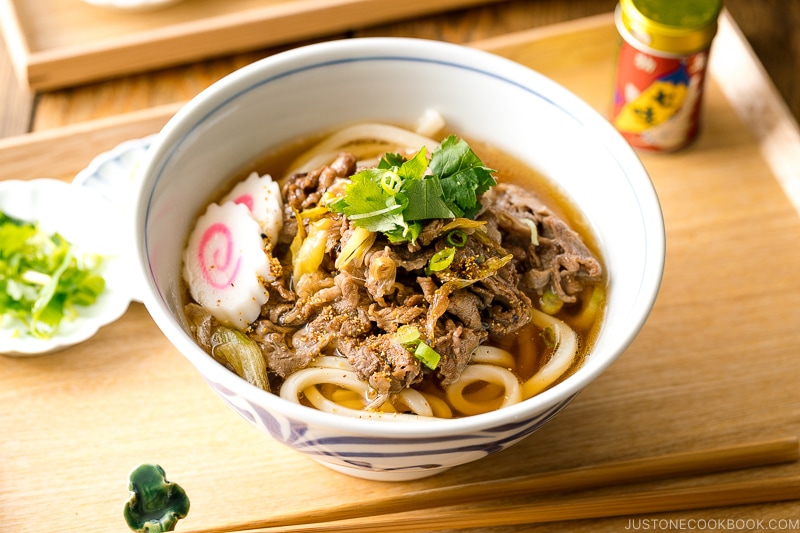
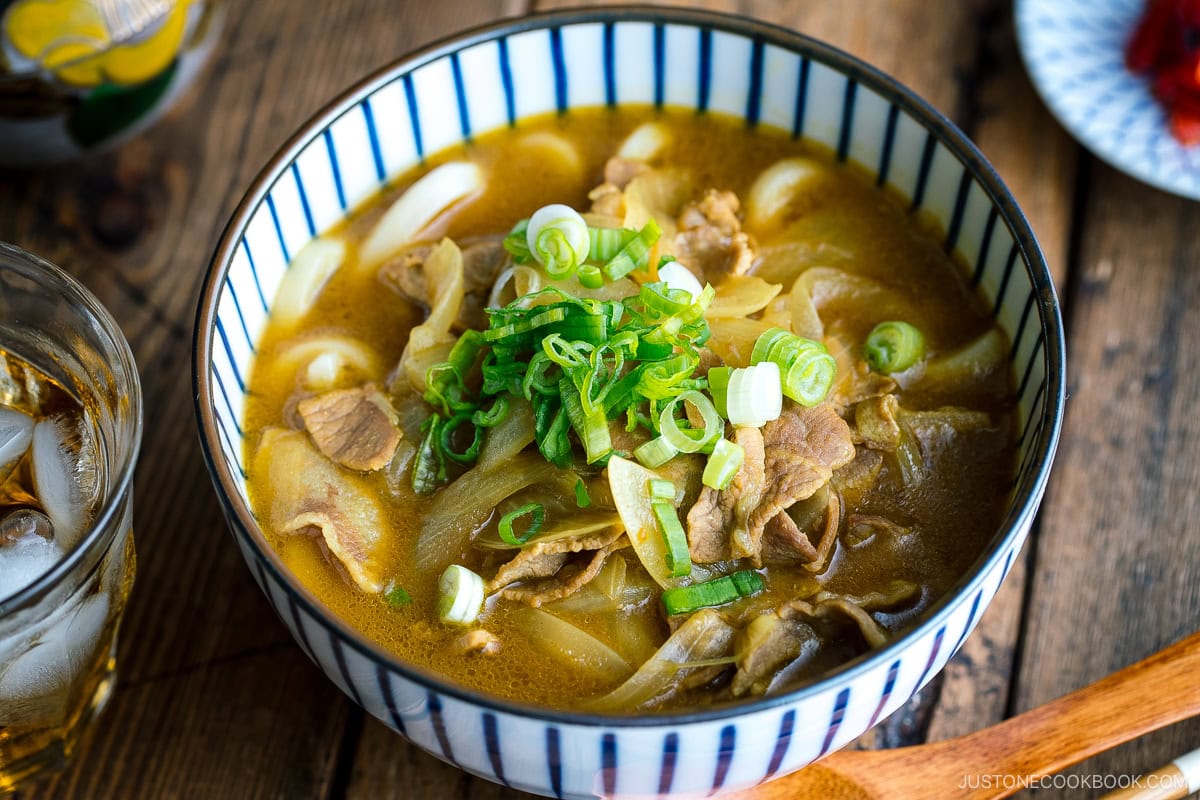
Storage Tips
To store: You can keep the udon noodles and broth separately in airtight containers and store them in the refrigerator for up to 3 days.
Frequently Asked Questions
You can. However, dried noodles won’t give you the chewy bite (called koshi (コシ) in Japanese) that frozen udon noodles have. I recommend frozen Sanuki udon from the Japanese market in the freezer section.
I don’t recommend it, since dashi powder lacks flavor. Please use a dashi packet or dashi made from scratch for the best results.
You can make the homemade soup broth ahead of time and reheat it right before serving. However, I recommend boiling the frozen noodles right before serving for the best texture and quality.
If you used a bottled mentsuyu from the store, it’s possible that you did not dilute the concentrated soup base enough. Usually, dilution instructions are written on the bottle, and each brand provides different ratios. Often times, the instructions are written in Japanese, so please be sure to follow the bottle‘s instructions for hot udon soup labeled うどん or めんのかけつゆ.
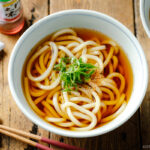
Udon Noodle Soup (Kake Udon)
Video
Ingredients
For the Homemade Broth
- 2⅓ cups dashi (Japanese soup stock) (use standard Awase Dashi, a dashi packet or powder, or Vegan Dashi)
- 1 Tbsp mirin
- 1 tsp sugar
- 1½ Tbsp soy sauce
- ⅛ tsp Diamond Crystal kosher salt (plus more, to taste)
For the Quick Broth (optional)
- ⅓ cup mentsuyu (concentrated noodle soup base) (or enough to make 2½ cups, 600 ml of soup; each brand is different, so follow your bottle‘s instructions for hot udon soup (うどん or めんのかけつゆ); I used Kikkoman Koidashi Hontsuyu; you can make my Homemade Mentsuyu)
- 2⅓ cups water (for my bottle‘s mentsuyu-to-water ratio of 1 to 7; please adjust the water based on your bottle‘s dilution ratio for hot udon soup)
- 1 Tbsp mirin
For the Udon Noodle Soup
- 2 servings udon noodles (1.1 lb, 500 g frozen or parboiled udon noodles; 6.3 oz, 180 g dry udon noodles; or 10.6 oz, 300 g Homemade Udon Noodles)
- toppings of your choice (thinly sliced green onion/scallion, shichimi togarashi (Japanese seven spice), and more options in the blog post)
Instructions
To Prepare the Homemade Broth
- In a medium saucepan, add 2⅓ cups dashi (Japanese soup stock), 1 Tbsp mirin, 1 tsp sugar, 1½ Tbsp soy sauce, and ⅛ tsp Diamond Crystal kosher salt.
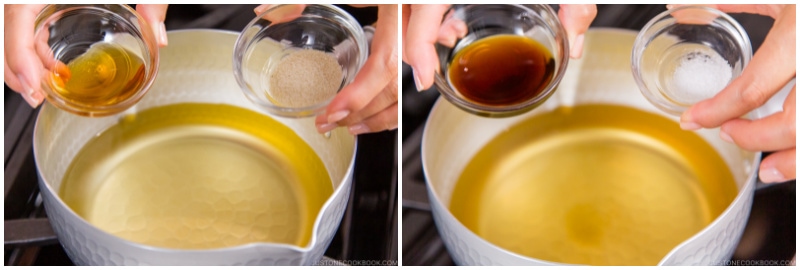
- Bring the broth to a gentle simmer. Once simmering, remove the pot from the heat. Cover with a lid and set aside.
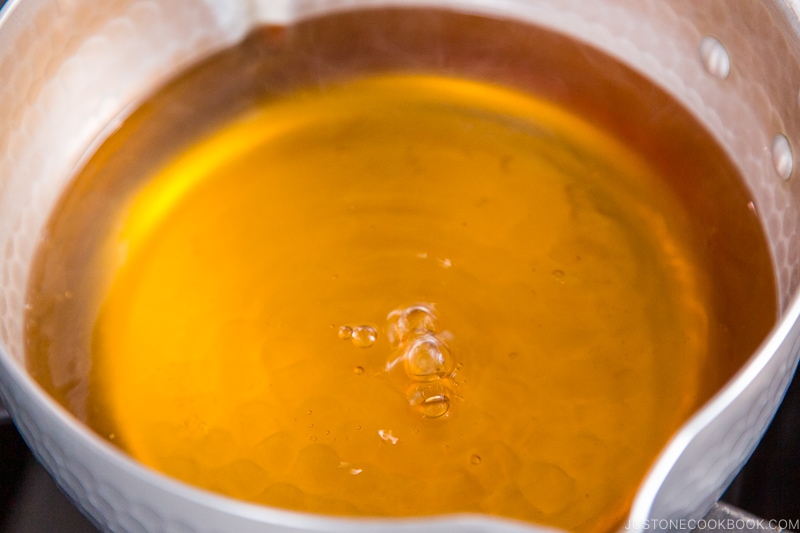
To Prepare the Quick Broth (optional)
- Follow the instructions on your bottle of concentrated mentsuyu for the correct dilution ratio for noodle soup broth (shown here as めんのかけつゆ).
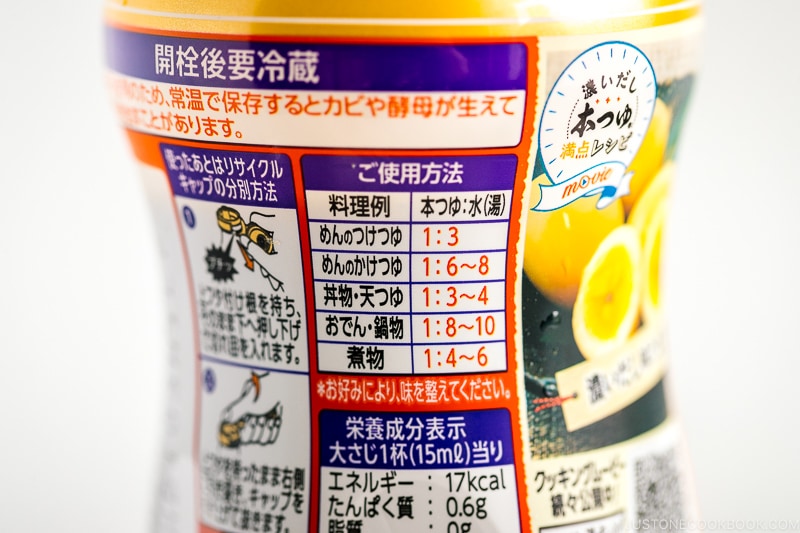
- Combine the water, mentsuyu, and mirin in a medium saucepan. For the brand of mentsuyu that I use, I add 2⅓ cups water, ⅓ cup mentsuyu (concentrated noodle soup base), and 1 Tbsp mirin. Bring it to a simmer over medium heat. Once simmering, remove the pot from the heat. Cover with a lid and set aside.
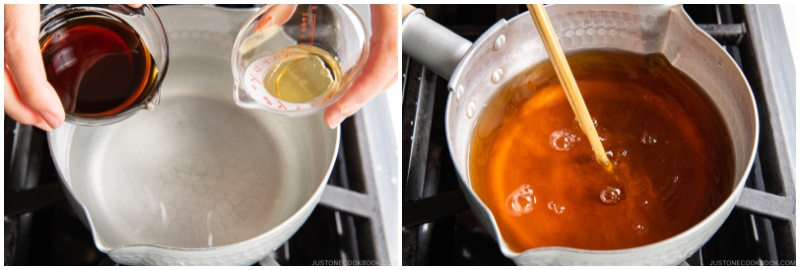
To Cook the Udon Noodles
- Bring a large pot of water to a boil. When the water comes to a full rolling boil, add 2 servings udon noodles and cook according to the package instructions. The brand of frozen udon noodles I use requires reheating them for 1 minute. Using chopsticks, stir the noodles to loosen them up. For fresh noodles, see the cooking instructions in my Homemade Udon Noodles recipe.
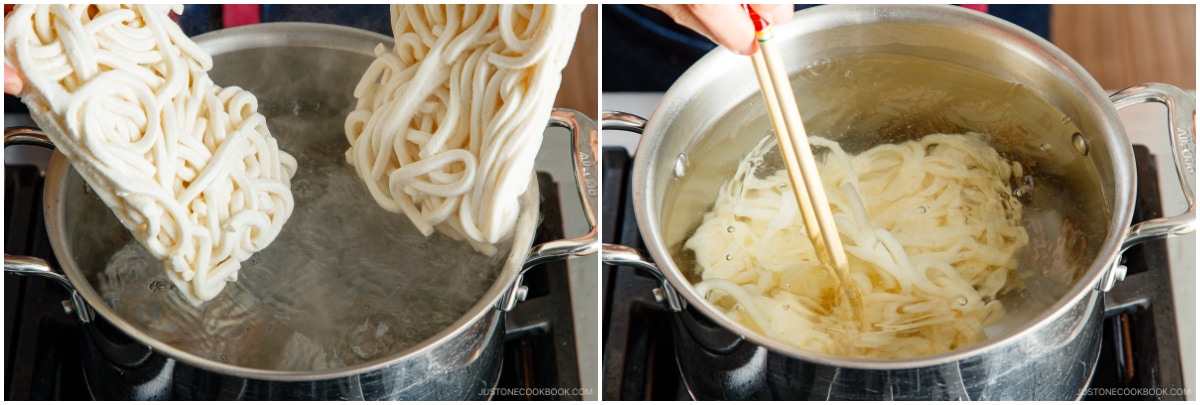
- When the noodles are done, drain them in a colander or scoop them up with a fine-mesh strainer. Serve the hot udon noodles in individual bowls.
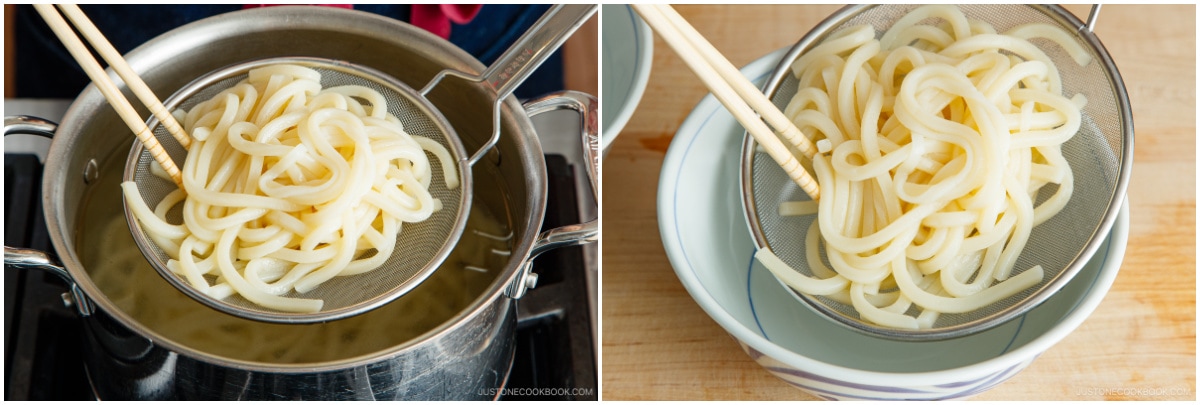
To Serve
- Pour the hot broth over the noodles and top with thinly sliced green onion and shichimi togarashi for a spicy kick (optional). For a more substantial lunch or dinner, you can top it with tempura, beef, fish cake and toasted mochi, tofu, Inari age, or vegetables. Watch the video above for 4 variations!
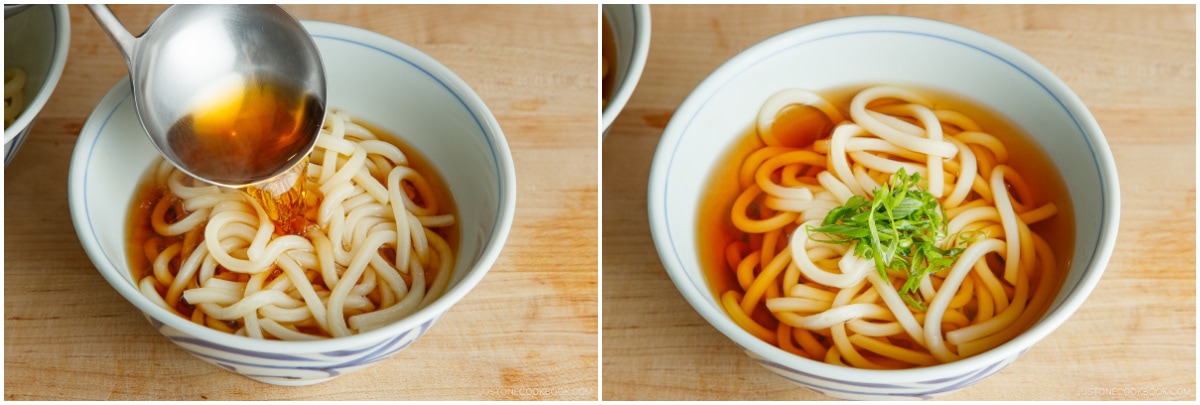
To Store
- You can keep the udon noodles and broth separately in airtight containers and store them in the refrigerator for up to 3 days.
Nutrition
Editor’s Note: This post was originally published on October 8, 2021. It was updated with new images and a new video on May 3, 2024, and republished with more helpful content on February 4, 2025.
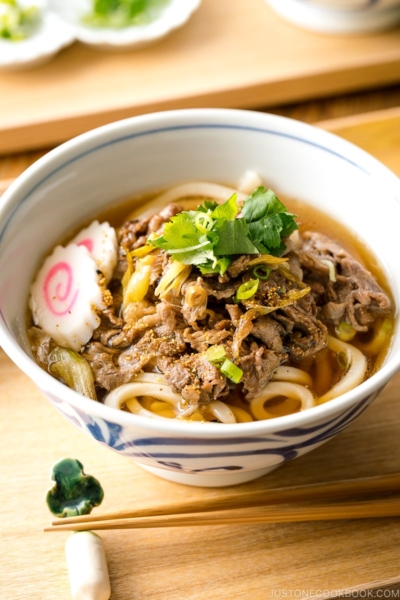
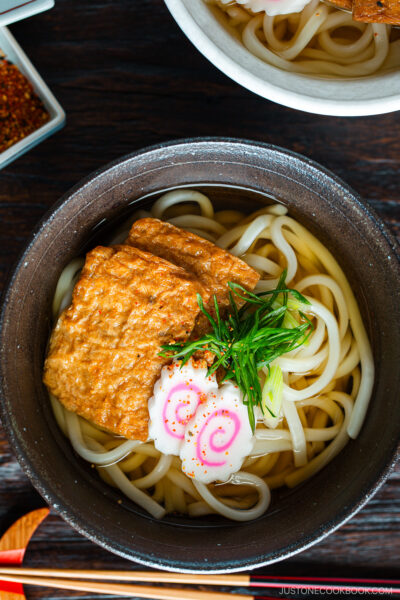
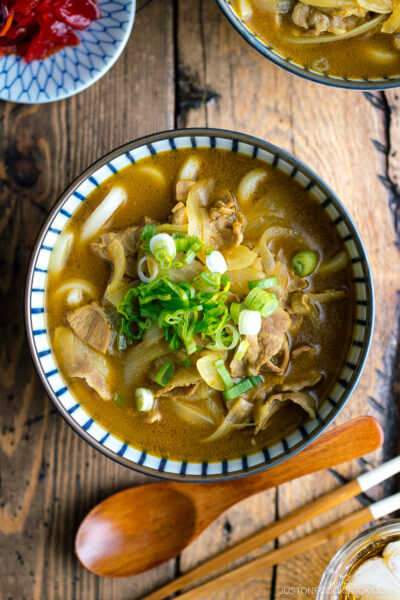





What is the prep and cook time and also how much people does this serve
Hello, Bob. Thank you for trying Nami’s recipe!
The preparation and cooking times, along with the number of servings, are listed at the top of the recipe card. You can easily adjust the serving size by sliding the bar for convenience.🙂 We hope this information helps!
I made this and I’m not sure if it was the dashi that I used but it was very salty! I’m going to try again and dilute the broth with water or stock to see if that works. (The dashi bottle only has Japanese on it, so for all I know, it’s a concentrate. 🙈)
Hi Jacinta! Thanks for trying this recipe! I wonder if it says 白だし (Shiro dashi) or つゆ (tsuyu). If you email us, we’re happy to check our for you (or you can use Google lens to translate the letter, too!). Usually, dilution instructions should be written on the bottle as each brand provides different ratios. They make the concentration salty so it lasts longer in the fridge. 🙂
I can’t believe how perfect this simple recipe is! I appreciate this website so much! Every recipe comes out perfect! You are my absolute trusted go-to for every japanese, or japanese american recipe!
Hi Andrea! We are glad to hear you enjoyed Nami’s recipe!
Thank you so much for trying her recipes and for your kind feedback.
Hi,
Is the store bought Dashi broth vegetarian based or like beef/chicken bullion type?
Thank you.
Hi Angela! The store-bought dashi I used is dashi packet or dashi powder.
Both of them have vegetarian/vegan-friendly version made with kombu (edible kelp) or/and dried shiitake mushrooms, but one that I use are based on seafood, made with kelp (vegan), katsuobushi or dried bonito flakes, and a type of anchovies.
What kind of dashi are you looking for? When Japanese refers to dashi, it’s usually not beef or chicken (meat).
Shortcut store-bought version:
https://www.justonecookbook.com/dashi-packet/
https://www.justonecookbook.com/dashi-powder/
The majority of these include seafood (bonito flakes or anchovies), so find the package that says Kombu dashi.
This post is all you need to know about dashi: https://www.justonecookbook.com/how-to-make-dashi-jiru/
Recipes:
The homemade dashi from scratch (takes 20 mins): https://www.justonecookbook.com/how-to-make-dashi/
The homemade vegan-friendly dashi (takes 20 mins): https://www.justonecookbook.com/vegan-shiitake-kombu-dashi/
Hope this helps!
I just made this and it’s very delicious. My broth was a bit too fishy so I added miso and it’s fantastic! Thank you for sharing these amazing recipes
Hi Pat! We are so happy to hear you enjoyed the dish!
Thank you for trying Nami’s recipes and for your kind feedback! Happy Cooking!
Is this just the same as bukkake udon or is this a completely different dish?
Hi Benson! Thank you for reading Nami’s post and trying her recipe!
The Bukkake Udon has more dark sauce and less liquid in the dish. You enjoy the texture of Udon with the sauce.
The Kake Udon is more like a noodle soup, and the soup broth is very flavorful that you can have it as soup.
There are two different dishes.
We hope this helps!🙂
I really loved this recipe! It was quick, simple, and delicious! I found it a bit too salty for my taste so I added a little extra sugar. Is it suppose to be fairly salty or is it because I used hondashi or maybe cooking mirin?
Hi Kris! Thank you very much for trying Nami’s recipe and for your kind feedback!
Yes. Hondashi and cooking mirin have salt in them, and it will make the dish saltier.😉
We have made your homemade udon noodles and are looking forward to making this soup. I am a little confused as to the amount of noodles to use. Your noodle recipe says 150g is one serving but the soup recipe for two servings says to use 500 g. Should we only be using 300 g of noodles for two servings?
Hi Celeste! Thank you very much for trying Nami’s recipes, and bringing this to our attention.
If you are using the homemade noodle, 300g is better. We had made the necessary changes to the recipe and made it more clear.😊
So tasty! I “made” the konbu dashi (it’s easy to impress people by saying you make a “cold brewed konbu stock”, when all you’re doing is putting some seaweed in water :D) and the udon noodles according to your recipes. It all turned out so well! Definitely going to pick up some shichimi, didn’t have any at hand so I went really lazy and just sprinkled a bit of cayenne pepper on top. Such a simple and refreshing soup!
Looking forward to trying some more of your udon recipes!
Hi Anderson! Thank you very much for trying Nami’s recipe and for your kind feedback!
We are so glad to hear you enjoyed Udon soup. Here is a link for more Udon recipes: https://www.justonecookbook.com/#search/q=udon
We hope you enjoy it! Happy Cooking!
5 stars! I made this with your homemade udon noodle recipe and enjoyed with some simmered daikon. I feel so comforted! I think your water and mentsuyu ratio is the wrong way around though 😉
Hi Toni! I’m so happy to hear you enjoyed this recipe. Thank you for trying my recipe and catching my error! 😅🤣